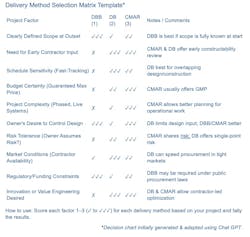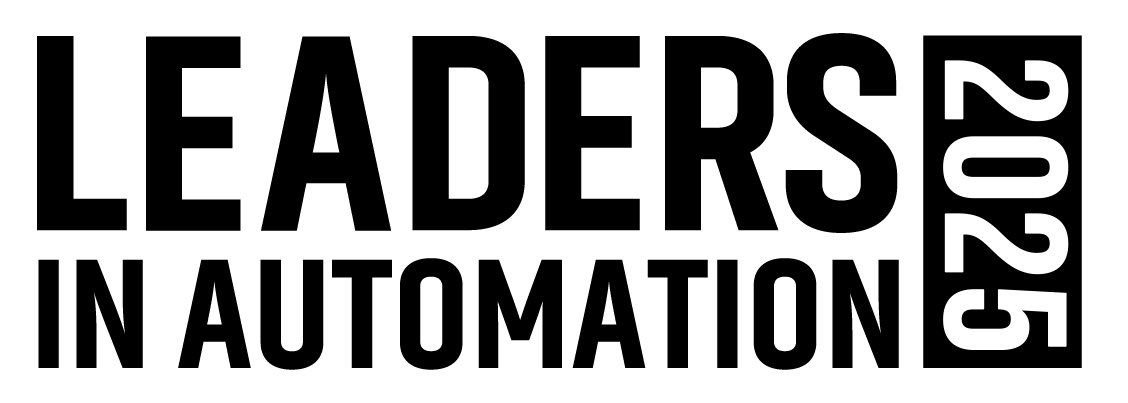The Quest for Project Efficiency: Alternative Versus Traditional Project Delivery
- Alternative project delivery methodologies can lead to better outcomes than the traditional design-bid-build process, with projects being completed102% faster along with the ability to reduce costly RFI cycles that plague late-stage integrator involvement.
- System integrators gain critical insight into customer requirements and can leverage their exposure to industry best practices and new technologies when brought in during the design phase, rather than being relegated to the typical "last-in" role that limits their impact.
- With alternative project delivery methods growing rapidly, integrators who understand these methodologies will be better positioned to secure and succeed in future projects.
Though the common goal of all automation projects is to be on time, on scope and on budget, there are too many high-profile examples projects that fail on these accounts. The Denver airport and its baggage sorting system and Ben & Jerry’s fully automated packing line are long-standing examples within recent memory where some, or all, of the three basic project tenants of success were not achieved.
The common thread woven in these scenarios was a series of events that included technical difficulties, management issues, breakdowns in communication and the consequences of introducing partners late into a project.
Weighing the pros, cons and cost of alternative versus traditional project delivery
To bring home the impact of project failures such as the ones listed above, imagine the same scenarios affecting the high reliability requirements of the municipal water/wastewater systems or bringing critical pharmaceutical products to market.
Considering this from the viewpoint of a large-scale project ranging from site construction to line automation, let’s look at the traditional methodology of design-bid-build (DBB), which used to be the cornerstone of construction project delivery. An architect/design engineer would work with a project owner to create detailed plans based on an agreed scope (design), the detailed plans would be put out for competitive bid with the contractor having the lowest qualified bid being selected (bid), and the selected contractor building the project according to the plans with a team of subcontractors who were also likely screened as lowest bidder (build).
This segmented, linear DBB methodology is beginning to share the spotlight with alternative delivery styles, such as design-build (DB), due largely to DB’s efficiencies in early collaboration, agility of established teams, schedule adaptability and cost predictability.
System integrators are more exposed to industry best practices, lessons learned, new technologies and vendor resources than those who are primarily concerned with conceptual design.
In fact, market adoption for DB is growing at a record pace. The “Design Build Utilization Study Key Finding Report” published by FMI Consulting in January 2025 states that DB projects are anticipated to account for more than 47% of construction spending by 2028. This fast-paced growth, according to the Design-Build Institute of America, can be attributed to statistics categorizing tremendous schedule efficiency. DB delivered projects during construction 36% faster than the traditional DBB methods, and a full 102% faster when calculated from the start of the project until completion.
Another alternative delivery style, called construction manager at risk (CMAR), is seeing similar gains over DBB. The FMI Consulting report noted above identified “other alternative methods,” of which CMAR is a significant component, predicted to rise from a current 37% of construction spending to 42% by 2028. CMAR benefits from many of the same positive influences that DB brings to the table, mainly stronger relationships with the owner/design team, valued input during the design phase and cost accuracy/transparency.
As with most statistics, these findings should be taken only as a single point of information and reviewed holistically with a multitude of data points to tell the entire story. For new project managers, it can be a tall task to determine what project equates best to what delivery method. For automation system integrators, the project delivery choice is fundamentally important to understand. That’s why taking the time to weigh all options before the project starts can yield the best outcome.
Charts like the one below can help.
The importance of a trusted partnership
As systems integrators and automation controls experts, we are very familiar with the scenario where we are the last ones brought into project designs. Our involvement with DBB projects usually entails pages of requests for information (RFIs) during the bid stage to come up with an accurate pricing model for the proposed scope. Additional RFIs are often delivered during the build stage to refine the scope to better align instrumentation and controls to customer requirements. This is by no means the most efficient process and often leads to cost increases, schedule impacts or inferior systems when recommendations are rejected to insulate both budget and schedule.
Design engineers have varying degrees of instrumentation and controls (I&C) expertise on their staffs, just as owners/municipalities have varying degrees of I&C expertise on their staffs. This means that, quite often a system integration engineering firm is either the de facto expertise for an owner/municipality which has no I&C staff or is an integral supplemental resource for an owner/municipality with limited I&C staff. Here, the relationship within the owner/municipality gives the system integrator critical insight to customer requirements, capabilities and limitations.
It should also be noted that system integrators are more exposed to industry best practices, lessons learned, new technologies and vendor resources than those who are primarily concerned with conceptual design. Systems integration engineering firms are an untapped resource in the DBB realm, but an integral partner in the DB methodology and a recommended partner in the early stages of the CMAR methodology.
According to the DBIA Manual of Practice: Research has consistently shown that the role of critical specialty contractors is one of the most important factors leading to the success or failure of a project. Involving specialty contractors before the design is 20% complete often leads to improvements in schedule, cost and quality. The specialty contractor should provide help in confirming the owner’s program requirements when the specialty contractor’s scope of work is a significant percentage of the project, it impacts the project’s critical path, or the specialty contractor has the ability to impact positively the project’s design phase.”
Don Glatt, PE, PMP is engineering project management professional and business development lead at Huffman Engineering Inc., certified members of the Control System Integrators Association (CSIA). For more information about Huffman Engineering, visit its profile on the Industrial Automation Exchange.


